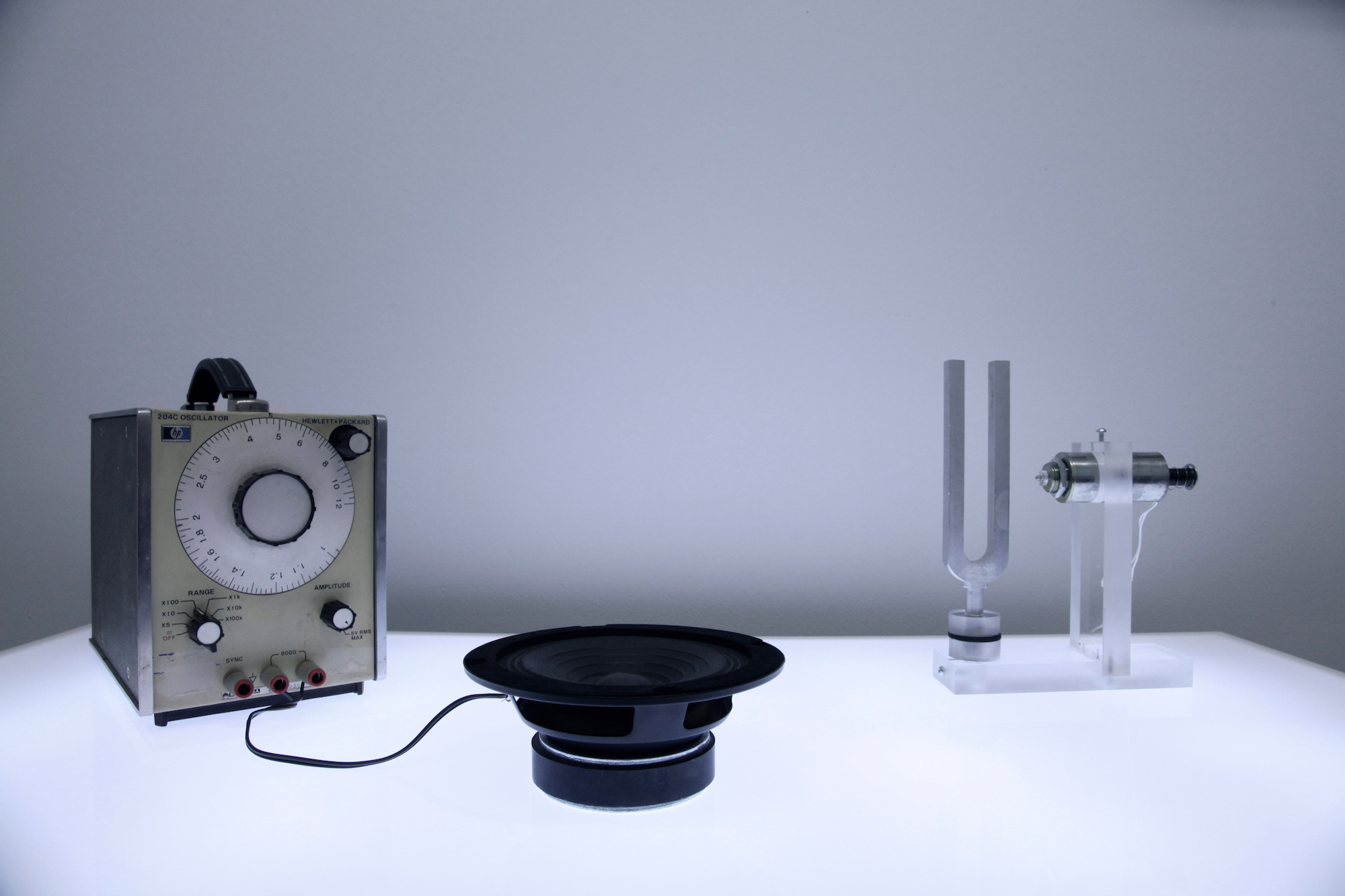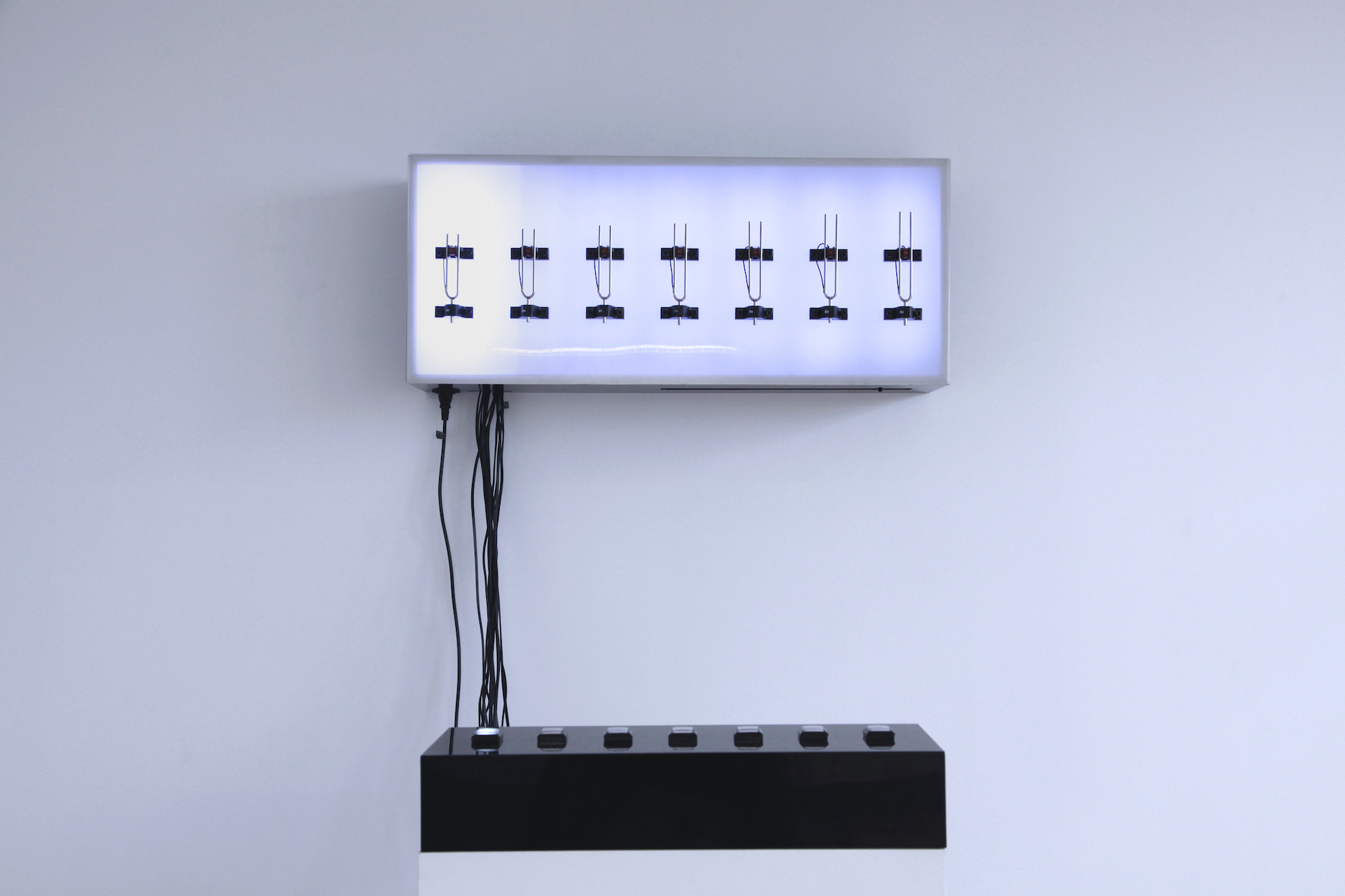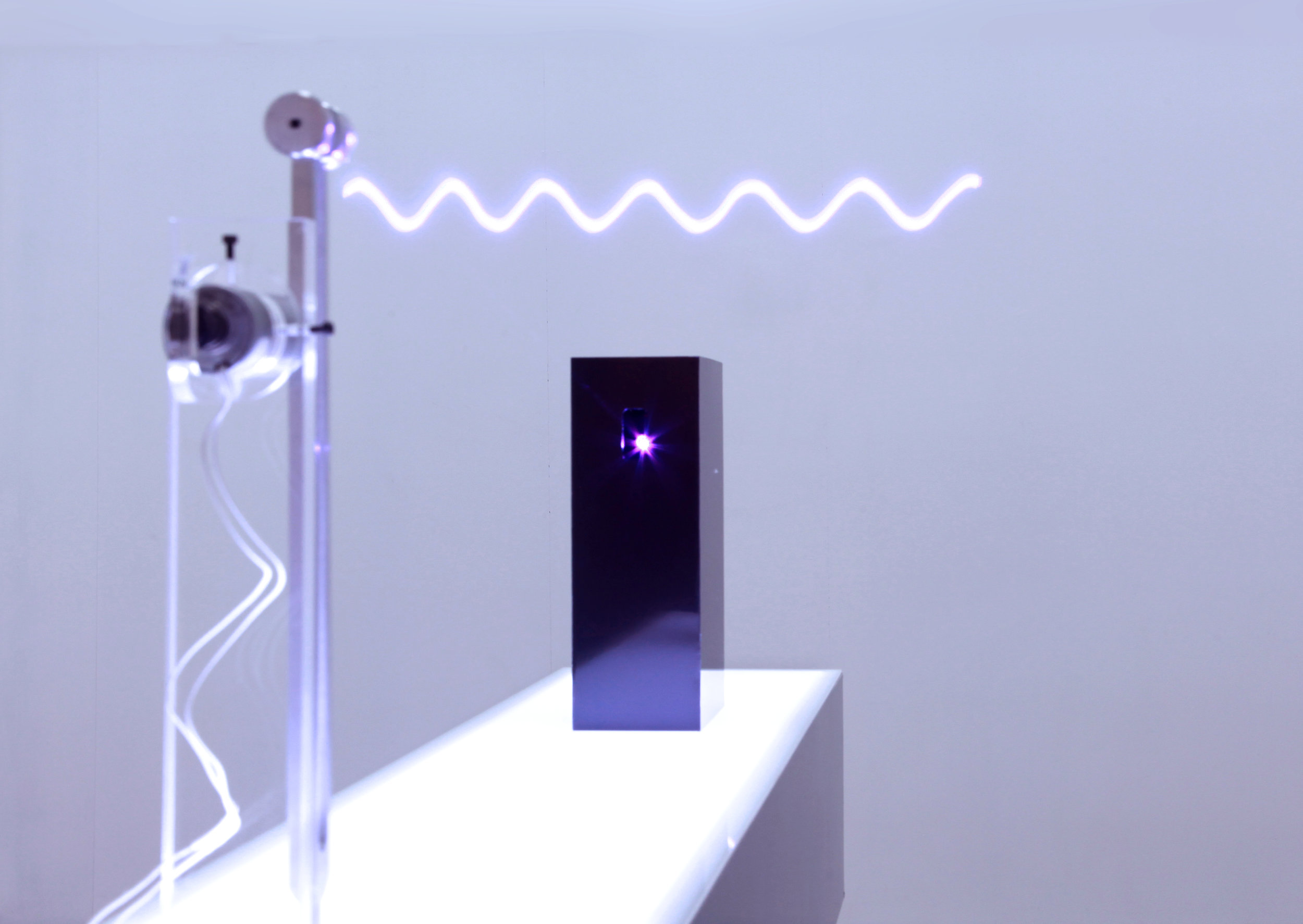Cycle de création vers une poétique du patrimoine scientifique (2012-2019)
L'histoire de la recherche scientifique précédant l'ère des technosciences foisonne de dispositifs inventifs pouvant participer à nourrir la création aujourd'hui. Les ouvrages phares de la physique tels que On The Sensations of Tones as a Basis for the Theory of Music (1863, Helmoltz), Sound (1877, Tyndall) ou encore Quelques expériences d’acoustique (1882, Koenig) proposent des inventions issues d’une imagination débordante et d’une poésie hors du commun. Le développement technique de la fin du 19e siècle n'est pas sans rappeler le zeitgeist de l’invention contemporaine portée aujourd’hui par la démocratisation de la micro-électronique, l'impression 3D et l'intelligence artificielle. Partant de collections de diapasons acoustiques, livres de fabricants de la première révolution industrielle et d’oscillateurs d'après-guerre, ce projet s’intéresse à l’utilisation du patrimoine scientifique comme moteur d’une création sonore contemporaine.
Publication
Octobre 2019
Le projet culmine avec la parution, aux éditions Les presse du réel (France), d’un livre/carnet de recherche-création qui discute des idées ayant menées à la réalisation de certains projets du cycle.
Activités notables
8 mar 2019
Structures infinies est nominée au Aesthetica Art Prize (Londres, Royaume-Uni) se soldant par une exposition collective à la York Gallery au Royaume-Uni.
15 novembre 2018
frequencies (a / archives) est exposée à BENTO (Mulhouse, France) organisé par Espace Multimédia Gantner.
5 octobre 2018
Communication à l’Université d’Ottawa lors de la journée d’étude Machines et imaginaires musicaux (1900-1950) intitulée Le patrimoine technologique de la première révolution industrielle comme moteur d’une création sonore contemporaine.
28 septembre 2018
Performance de l’oeuvre frequencies (a), table ronde et classe de maître à Victoria University of Wellington (Nouvelle-Zélande).
24 mars 2018
Expositionde l’oeuvres frequencies (a / oscillation) Les formes d’ondes au CeUM de l’Université de Montréal.
16 octobre 2014
Exposition de frequencies (a / archives) au Festival Maintenant (Rennes, France) et résidence dans les Archives scientifiques de l’Université Rennes 1.
Golden Nica : 14 septembre 2014
La première oeuvre du cycle, la performance frequencies (a), mérite un Golden Nica au Prix Ars Electronica en Autriche, une des plus hautes distinctions dans la discipline.
3 mars 2014
Communication à titre de conférencier keynote à l’événement Audible Bytes à la De Montfort University.
2012 à 2017 : plus d’une trentaine de présentations internationales
Les installations et performances de ce cycle ont été présentées plus d’une trentaine de fois aux 4 coins du monde. Le calendrier complet des représentations se trouve sur le site personnel du chercheur principal www.nicolasbernier.com.
Chercheur principal
Nicolas Bernier
Collaborateurs
Dominique Bernard : physicien, Université Rennes 1, France
Damien Simon : Le bon accueil, Rennes, France
Assistance technique
Robocut
Jean Philippe Pierre Louis (2014-2016)
Financement
MAC Créteil (France), Laboral (Espagne) et le CALQ (Québec) pour l’oeuvre frequencies (light quanta)
Festival Maintenant (France) pour l’oeuvre frequencies (a / archives)
CALQ pour la publication Sur le diapason.
Les autres réalisations ont été financées personnellement avec le soutien en infrastructure de l’Université de Montréal.
Mots-clés
Installation, son, lumière, fabrication, science
Dispositif installatifs
Note : les descriptions sont en anglais car elles proviennent directement de Vimeo qui est utilisés pour insérer les vidéos de documentation.



